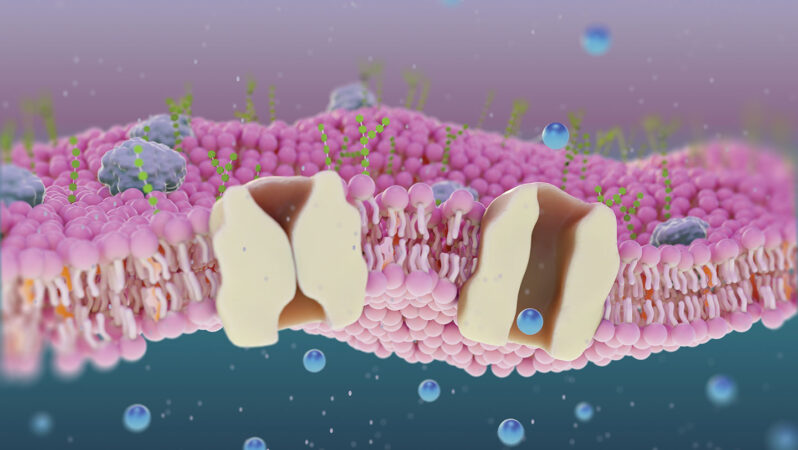
action potential: A brief change in the electrical potential on the surface of a cell, especially of a nerve or muscle cell. It happens when the cell is stimulated. This triggers the release of an electrical impulse.
atom: The basic unit of a chemical element. Atoms are made up of a dense nucleus that contains positively charged protons and uncharged neutrons. The nucleus is orbited by a cloud of negatively charged electrons.
average: (in science) A term for the arithmetic mean, which is the sum of a group of numbers that is then divided by the size of the group.
axon: The long, tail-like extension of a neuron that conducts electrical signals away from the cell.
battery: A device that can convert chemical energy into electrical energy.
calcium: A chemical element and alkali metal common in minerals of the Earth’s crust and in sea salt. It is also found in bone mineral and teeth, and can play a role in the movement of certain substances into and out of cells.
cell: (in biology) The smallest structural and functional unit of an organism. Typically too small to see with the unaided eye, it consists of a watery fluid surrounded by a membrane or wall.
cell membrane: A structure that separates the inside of a cell from what is outside of it. Some particles are permitted to pass through the membrane.
chemical: A substance formed from two or more atoms that unite (bond) in a fixed proportion and structure. For example, water is a chemical made when two hydrogen atoms bond to one oxygen atom. Its chemical formula is H2O.
chemistry: The field of science that deals with the composition, structure and properties of substances and how they interact. Scientists use this knowledge to study unfamiliar substances, to reproduce large quantities of useful substances or to design and create new and useful substances.
concentration: (in chemistry) A measurement of how much of one substance has been dissolved into another.
contract: To activate muscle by allowing filaments in the muscle cells to connect. The muscle becomes more rigid as a result
current: A fluid — such as of water or air — that moves in a recognizable direction. (in electricity) The flow of electricity or the amount of charge moving through some material over a particular period of time.
develop: To emerge or to make come into being, either naturally or through human intervention, such as by manufacturing.
electric charge: The physical property responsible for electric force; it can be negative or positive.
electric current: A flow of electric charge — electricity — usually from the movement of negatively charged particles, called electrons.
electrochemical gradient: A difference in the concentration of charged particles across a membrane. Because the particles themselves have small electrical charges, concentrations of those particles can give an area an overall electric charge.
electricity: A flow of charge, usually from the movement of negatively charged particles, called electrons.
electrochemical: An adjective for processes by which electricity affects chemical changes in some substance and also how chemical energy can be converted to electrical energy or vice versa.
gradient: From the word “grade,” it describes the incline, slope or degree of increase in some measure (such as temperature, pressure or even color) that develops as one moves in time, position or along some scale.
ion: (adj. ionized) An atom or molecule with an electric charge due to the loss or gain of one or more electrons. An ionized gas, or plasma, is where all of the electrons have been separated from their parent atoms.
membrane: A barrier which blocks the passage (or flow through) of some materials depending on their size or other features. Membranes are an integral part of filtration systems. Many serve that same function as the outer covering of cells or organs of a body.
migrate: (n. migration) To move long distances in search of a new home.
muscle: A type of tissue used to produce movement by contracting its cells, known as muscle fibers. Muscle is rich in protein, which is why predatory species seek prey containing lots of this tissue.
neuron: The main cell type of the nervous system — the brain, spinal column and nerves. These specialized cells transmit information by producing, receiving and conducting electrical signals. Neurons also can transmit signals to other cells with chemical messengers.
particle: A minute amount of something.
potassium: A chemical element that occurs as a soft, silver-colored metal. Highly reactive, it burns on contact with air or water with a violet flame. It is found not only in ocean water (including as part of sea salt) but also in many minerals.
protein: A compound made from one or more long chains of amino acids. Proteins are an essential part of all living organisms. They form the basis of living cells, muscle and tissues; they also do the work inside of cells. Antibodies, hemoglobin and enzymes are all examples of proteins. Medicines frequently work by latching onto proteins.
sodium: A soft, silvery metallic element that will interact explosively when added to water. It is also a basic building block of table salt (a molecule of which consists of one atom of sodium and one atom of chlorine: NaCl). It is also found in sea salt.
stimulus: (plural: stimuli) Something that prompts a response in a living organism or in a controlled environment (including a chemical or physical test system).
taste: One of the basic properties the body uses to sense its environment, especially foods, using receptors (taste buds) on the tongue (and some other organs).
tissue: Made of cells, it is any of the distinct types of materials that make up animals, plants or fungi. Cells within a tissue work as a unit to perform a particular function in living organisms. Different organs of the human body, for instance, often are made from many different types of tissues.
